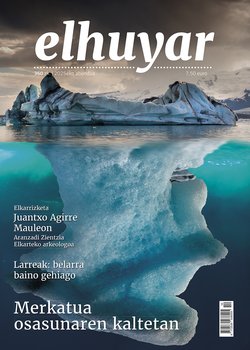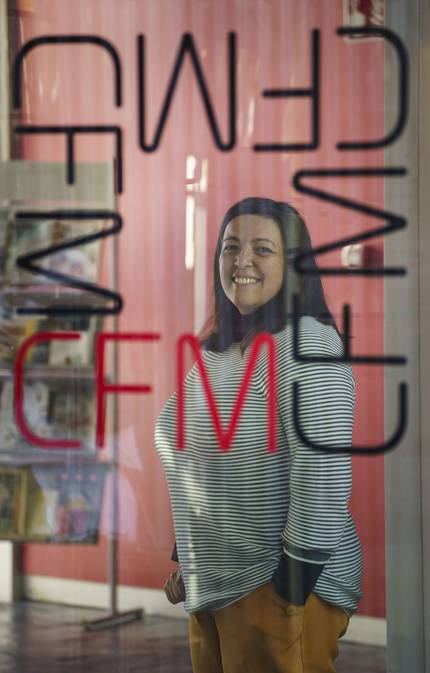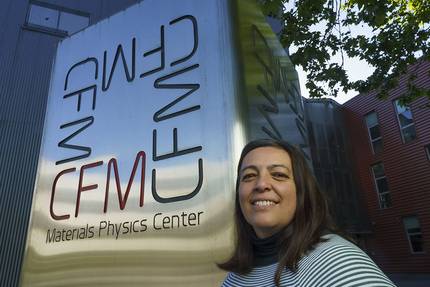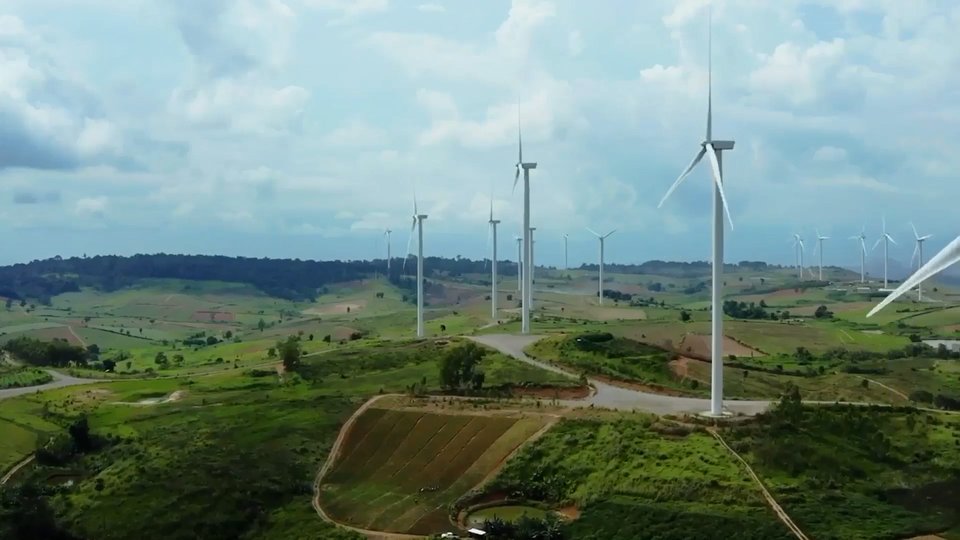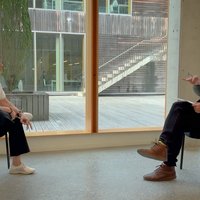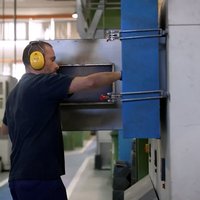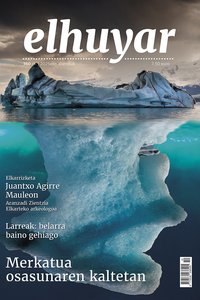“In science, without communication, there is no progress.”
On a sunny Friday we were greeted by Celia Rogero Blanco, the new director of the Materials Physics Center, in the lobby of the center. The comrades are coming in and greeting each other with a smile, with the same kind smile that hasn’t been erased in the long time with us. She tells us calmly about her first steps in physics, about being a woman in such a masculinised area, about her work as a researcher, about her goals in her new position, and about the challenges that material physics has to face in today’s crises: climate emergency, pollution, health risks...
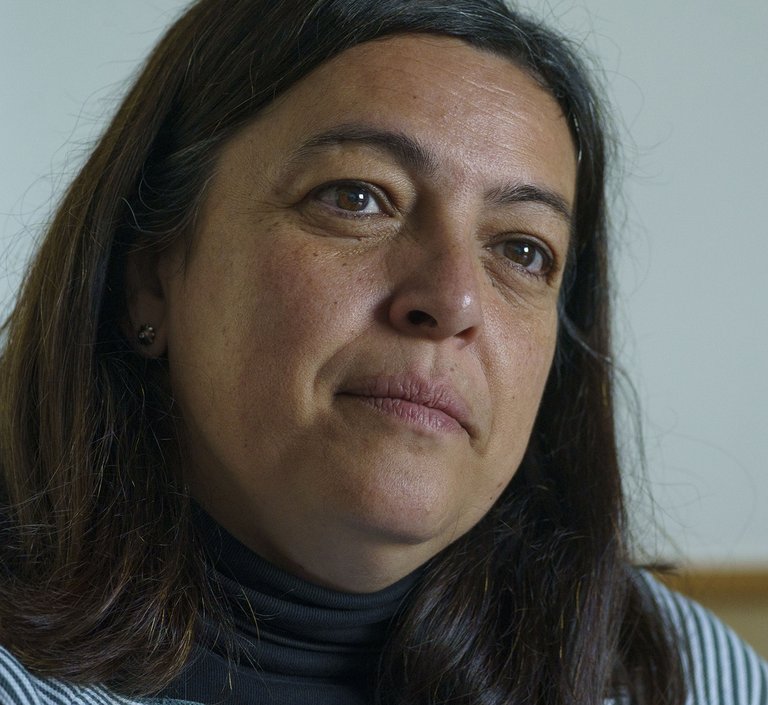
How did you take up the new position: with enthusiasm, dedication, a little bit of vertigo, maybe...?
Yeah, actually, a little bit of everything. At the first moment, I felt this responsibility, yes, vertigo, but above all, I have approached it with enthusiasm to help the center move forward as it has been until now.
In fact, until now I have been working as a researcher at the center, in the nanophysics laboratory, since I am a researcher by nature. Therefore, my main task has been to carry out research at the centre, but I have also participated in other activities, such as the committee. And I think it's our responsibility to take responsibility for the center as well.
You are a researcher, a physicist. Have you always known that you would be a physicist?
Physicist, I don't know, but I was going to play science, yes. I loved science and I loved mathematics. My father is a mathematician and, my mother, an economist, but more than my family, I turned to science because of my hobby: I liked construction toys, playing with numbers, solving problems... I got into physics in a very natural way.
You came in natural. But considering that the field of physics was, and is, completely masculinized, you didn't feel weird in any way? Did being in the minority affect you?
No, not at all. We were educated in equality at home, and at that time, in my area [Madrid], girls were the most common to attend classes for girls. Our school was mixed, and there were more boys than girls. So it wasn't weird for me. Probably, if I look back with today’s eyes, I would see things differently, because we are more aware of the gender gap; but at that time, I did not feel different or undervalued. Besides, I think there were more girls studying physics then than there are now.
At least now, in the research centres, including yours, anti-discrimination actions are being promoted. In addition, it is also important that the current director is female in terms of referentiality.
Yes, I hope so [with a small laugh, humble]. In addition, I am not the only one; there are more research centres here with women in managerial positions. However, in my opinion, the problem is more profound than the question of referents, and it belongs to society as a whole. Because girls don't want to study math, physics, And girls are good at school in these areas as well. But at some point, they lose interest and, when choosing university studies, they move to other areas. The problem seems to be at the base.
Honestly, I’m not sure what the real problem is. But when I was young, I thought we were getting over it, and now I have the feeling that we're going backwards.
Otherwise, we have an equality plan in the center itself, which is taken into account, for example, in hiring. In addition, the Centre is strongly encouraged to organize activities exclusively for women, or to make it clear to society that there are women in science, even outside of 11 February [International Day of Girls and Women Scientists]. The aim is to highlight women in the centre and women researchers in general in all initiatives aimed at making the centre visible. We're trying to create that culture.
And back to your beginnings, how did you get involved in the investigation?
It wasn't something that was decided beforehand. I liked it, but back in college, I wasn't particularly brilliant. I studied at the Universidad Autónoma de Madrid and since we were part of the boom generation, we met hundreds of students in each class and I thought that the research was for the pointers. I didn’t know what a physicist had when he finished his university studies; all I knew was that I didn’t want to take the path that most of them took: consulting and auditing.
I trusted a professor, I asked him, and he told me about the lab. I asked some researchers in the area, and they encouraged me, too. So I approached the lab, and when I saw an atom with the tunneling electron microscope, I flipped it.
So I joined the group of new microscopes. It was a very dynamic group, personal relationships seemed very healthy to me, everything was very fun, they talked a lot to each other, and they supported each other a lot. And they did fascinating things. With them I realized that in research it is not about being the first in the studies, but that you have to be curious, imagination, the desire to try things and play, courage, creativity... That's what got me hooked.
How far from the stereotype of an isolated and genius researcher is what you are telling us!
In science it is essential to talk. Try it, and don’t be afraid to fail. Ask and listen. Giving and receiving ideas, sharing opinions... No one is born knowing. Communication is essential: in science, without communication, there is no progress.
Then you went from material physics to astrobiology. How close or far away are they?
They are not two worlds; they are the same world. We investigate the matter in the science of materials. The world we know is made of matter, and of antimatter, but we know this not so well. But everything we investigate is made of matter. In my thesis and postdoctoral thesis, in Newcastle, I studied the characteristics of materials: electronic, structural characteristics... But then I started to look for applications and I started to make sensors.
My specialty is the physics of surfaces, that is, the last atomic layer of materials. The sensors carried out on these scales are molecular and detect particles such as ions, molecules, gases... So I started making sensors to detect DNA, RNA and so on. And in astrobiology, among other things, we investigate the molecules that the exoplanets contain and how they are formed, and whether there are amino acids in the nanoparticles in the interstellar powder, how they are formed, and whether life can be generated from them. Therefore, surface physics is needed to create ultra-thin systems, for example, to simulate what happens in space; to develop sensors; and to understand how organic molecules work so that they can be used in applications.
So I helped to make biosensors, and with that, I started another line. I'll explain it to you. We have hemoglobin in our blood, and the porphyrin molecule in hemoglobin is key to its functioning. Its mechanism is well known at the physiological level. But, at the molecular level, if we know how porphyrin captures and releases oxygen, we can make systems to capture and store oxygen, and sprout it wherever we want. This can have many applications: breathing underwater, or in space, or treating a deficiency...
Although it seems to be science fiction, and in principle it seems that the physics of materials and astrobiology have no connection, in fact, if you have a global vision, you are aware that everything is related. It was with this line that I came from astrobiology to the center of material physics. Somehow, I'm on my way from basic science to application.
You've been here for years as a researcher, and now you've been appointed director. What are your goals?
The first is to continue strengthening the center. Previous directors have worked hard to build a strong, structured center, excellent researchers... Not only do we want to continue to do so, but we also have to find ways to meet new challenges. The competition is growing and in the classical structure of the centers, as in the university, the research was carried out in groups and, in many cases, there was not much communication between the groups. On the other hand, there is now an international impulse for the centres to have a common vision: to have the same objectives, to work with a specific vision...
And we are also working on it: defining common objectives, and promoting synergies between the different groups of the Centre. We have excellent professionals and, with the combined efforts of all, we can go a long way. To do this, we promote interactions so that researchers can talk to each other, not only inside the center, but also outside. This also happens on its own, but it is true that the pandemic brought a pause. So now we’re dynamizing relationships to strengthen face-to-face relationships.
With the pandemic, we have seen that online encounters make it difficult to create personal relationships. Researchers are people, and in order to share questions, doubts and ideas informally, we need to have others in person. Even in congresses, the most enriching conversations often take place at leisure intervals.
According to studies, there is also the gender gap, as it is often more difficult for women to be in the post-dinner interval, for example due to conciliation.
Yes, and that's why the roles last. Why do men not conciliate? Here's the thing. This goes beyond the scientific field; it is a social problem.
Looking at society, what contribution can material physics make in response to contemporary problems? Climate emergency, energy, pollution...
It can help from every perspective, too. Right now, at the centre, we have more than one climate change project. For example, a group is investigating green concrete: concrete or cement that does not heat up, so that the temperature of cities does not rise; or that accumulates energy; or that generates energy! This can be of immense benefit.
Going from the macroscopic to the micro level, we are developing sensors or filters to purify water, since water pollution is a big problem: traces of drugs, heavy metals... In addition, we are investigating new catalysts for obtaining hydrogen from water, such as solar energy. Therefore, we work from macroscopic structures to the control of a surface from atom to atom, in line with the environment and the climate.
In medicine, on the other hand, we have thousands of patents on nanoparticles for all kinds of applications: from the brain to the feet, in diagnosis, therapy... The whole thing.
The fact is that knowing the characteristics of materials at the atomic level allows you to invent new applications and advance in all areas: quantum computers, communications... And I think this is remarkable: there is less and less space between basic research and its application. Therefore, you should not think that by investigating something very basic, your work will not have an application, because it is not true.
It could have happened before that it would have been 20 to 30 years between knowing something and creating an application based on it. Now, sometimes it happens almost at the same time: thinking along with discovering a feature can be ideal for something. In our center we want to promote this: that researchers are able to realize that we are not so far from the application. Being aware of this, having this awareness will help us move forward.
Finally, what are your dreams, personally?
Ugh, I don't know... Since I started researching, I've seen so many things that I thought were unthinkable before... At my first congress, at a conference of a car company, a coating film was being presented on the hood of cars which would protect them from corrosion by pigeons. And now all cars have a coat like that. Self-cleaning windows, touch screens, flexible screens... I’ve met all of them in congresses and now they are on the street or we have them in hand. So, I don't know what to answer...
In reality, what I would like is for the resources to be available to everyone. I would like to close the gap between developed and impoverished countries; in energy, drinking water, medicine... We have bespoke antibodies, for example, and they don’t. My dream is that this type of development is available to everyone.
Buletina
Bidali zure helbide elektronikoa eta jaso asteroko buletina zure sarrera-ontzian


